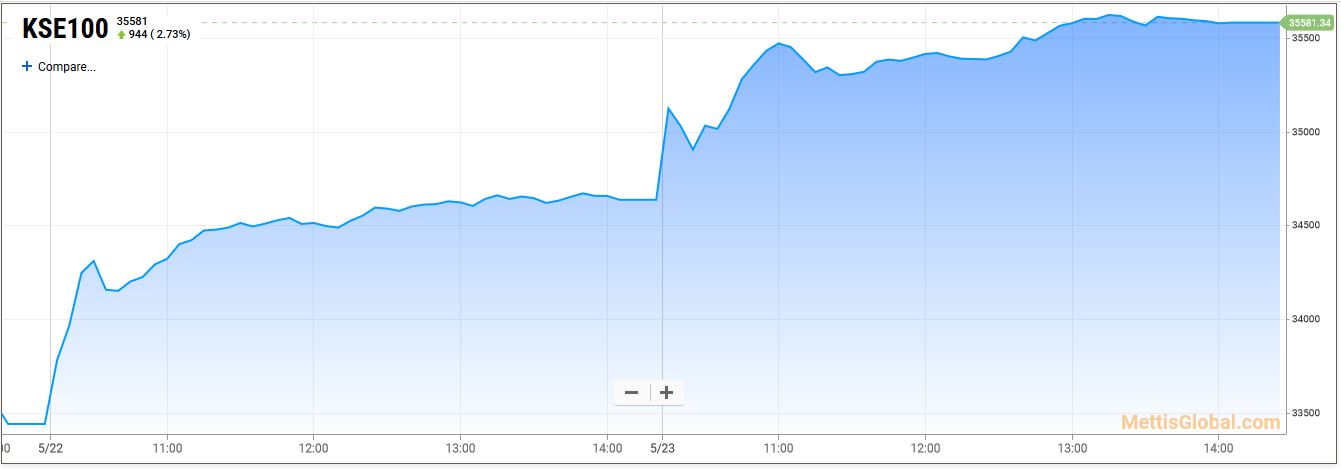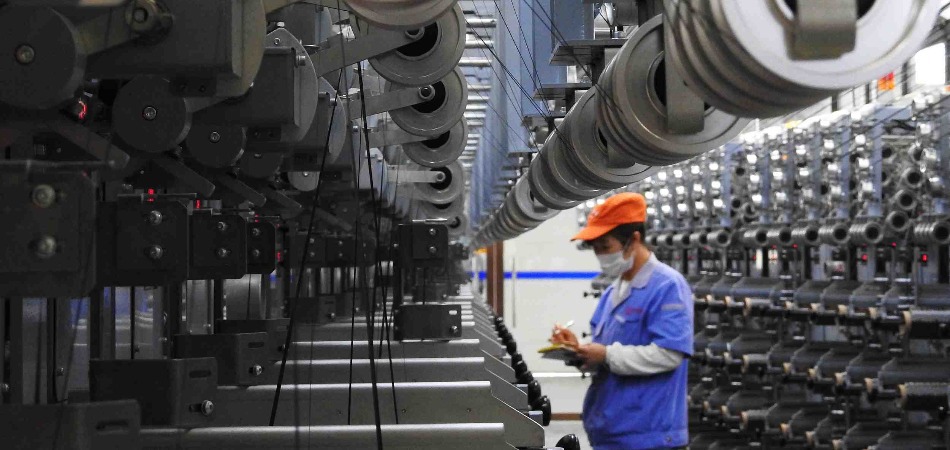US economic growth slows in Q2

By MG News | July 27, 2019 at 09:55 AM GMT+05:00
Jul 27, 2019: The American economy cooled in the second quarter of 2019 to a still-solid pace, government data showed Friday, while officials also slashed an economic figure prized by President Donald Trump.
Newly revised data covering the past five years now show the world's largest economy actually slowed in the year after Trump and congressional Republicans pushed through a sweeping, $1.5 trillion tax cut.
The change dealt a sharp blow to Trump's economic message and also highlighted how momentum had deteriorated in the final months of 2018 when the Federal Reserve last raised interest rates in defiance of intense pressure from Trump.
The central bank next week is widely expected to cut its benchmark lending rate, reversing December's increase.
The Commerce Department reported that gross domestic product in the April-June quarter slowed to 2.1 percent from the first three months of the year, down sharply from 3.1 percent growth in the first quarter, but that was better than expected, helped by strong consumer spending.
Taken together the new data portrayed an economy that enjoys robust strength in some quarters but has begun to sputter worryingly in others, even while the US is outshining sluggish economies in Europe, Japan and elsewhere.
Analysts had expected second quarter growth of just 1.8 percent, but the economy got a boost from strong spending on autos, food and clothing.
"Not bad," Trump tweeted Friday, "considering that we have the very heavy weight of the Federal Reserve anchor wrapped around our neck."
"USA is set to zoom!"
Federal spending also took its biggest leap in a decade -- with non-defense expenditure rising at the fastest pace in 21 years -- a one-time jolt as the government resumed paying employees following the five-week partial government shutdown at the start of the year.
But that was not enough to make up for tumbling investment in factories and commercial buildings, which sank more than 10 percent for the quarter, and falling income from software royalties and other intellectual property.
- A banner number no more -
Amid a global economic slowdown, weakening foreign demand for US exports meant American factories sold fewer autos, parts and factory equipment.
The ailing American manufacturing sector also produced fewer non-durable goods while retail and wholesale trade softened.
Declining travel exports, dominated by tourists and foreign students, also weighed growth down for the quarter.
In the revisions that stretch back to the final quarter of 2013, the Commerce Department said revised and newly available data showed October-December 2018 was much weaker than previously reported, notably spending on healthcare and autos.
The fourth quarter of 2018 expanded just 1.1 percent, down from the 2.2 percent reported in March.
As a result, growth between the fourth quarter of 2018 and the fourth quarter of 2017 -- the measure of annual growth favored by the White House and many economists -- was chopped down to 2.5 percent from 3.0 percent.
Economists say comparing the fourth quarter to fourth quarter of the prior year gives a more accurate picture of the economy.
The downward revision stripped Trump of the banner 3.0 percent number he had repeatedly hailed in public appearances and social media as the greatest economic performance in 14 years.
A prior Commerce Department estimate of 2.9 percent average growth for all of 2018 compared to all of 2017 was unrevised.
But Trump in March specifically rejected this measure.
"The press tried to make it 2.9. I said, 'it's not 2.9,'" Trump said during speech to supporters in Ohio.
"I said, 'We're going to break three.' And we did."
In policy documents, the White House claims the president's economic agenda of tax cuts, slashed regulation and trade reform will push the US economy to three percent annual growth over a decade.
Instead, the economy actually slowed following the tax cuts from 2.8 percent in 2017.
White House economic advisor Larry Kudlow on Friday echoed Trump's view that any sluggishness could be blamed on the Fed and that the economy was otherwise robust.
"I think, you know, to keep this thing going in the face of severe monetary tightening in 2017 and '18, seven rate hikes, I think it's almost a miracle that the economy is growing as rapidly as it is," he told CNBC.
Wall Street was little moved by the numbers, with the S&P 500 and Nasdaq rising instead to record closes on strong earnings from Google, Starbucks and others.
AFP/APP
Related News
| Name | Price/Vol | %Chg/NChg |
|---|---|---|
| KSE100 | 130,686.66 280.01M |
0.26% 342.63 |
| ALLSHR | 81,305.25 897.01M |
0.35% 281.26 |
| KSE30 | 39,945.45 114.02M |
0.09% 37.19 |
| KMI30 | 190,698.05 148.61M |
0.61% 1163.05 |
| KMIALLSHR | 55,074.15 495.43M |
0.53% 290.50 |
| BKTi | 34,568.40 28.73M |
-1.07% -372.33 |
| OGTi | 28,739.35 22.59M |
1.57% 443.29 |
| Symbol | Bid/Ask | High/Low |
|---|
| Name | Last | High/Low | Chg/%Chg |
|---|---|---|---|
| BITCOIN FUTURES | 110,185.00 | 110,525.00 110,055.00 |
-230.00 -0.21% |
| BRENT CRUDE | 68.77 | 68.89 68.71 |
-0.03 -0.04% |
| RICHARDS BAY COAL MONTHLY | 97.50 | 0.00 0.00 |
-0.75 -0.76% |
| ROTTERDAM COAL MONTHLY | 108.45 | 109.80 108.45 |
-0.55 -0.50% |
| USD RBD PALM OLEIN | 998.50 | 998.50 998.50 |
0.00 0.00% |
| CRUDE OIL - WTI | 67.05 | 67.18 66.99 |
0.05 0.07% |
| SUGAR #11 WORLD | 16.37 | 16.40 15.44 |
0.79 5.07% |
Chart of the Day
Latest News
Top 5 things to watch in this week
Pakistan Stock Movers
| Name | Last | Chg/%Chg |
|---|
| Name | Last | Chg/%Chg |
|---|



.jpg)
 Trade Balance
Trade Balance
 CPI
CPI